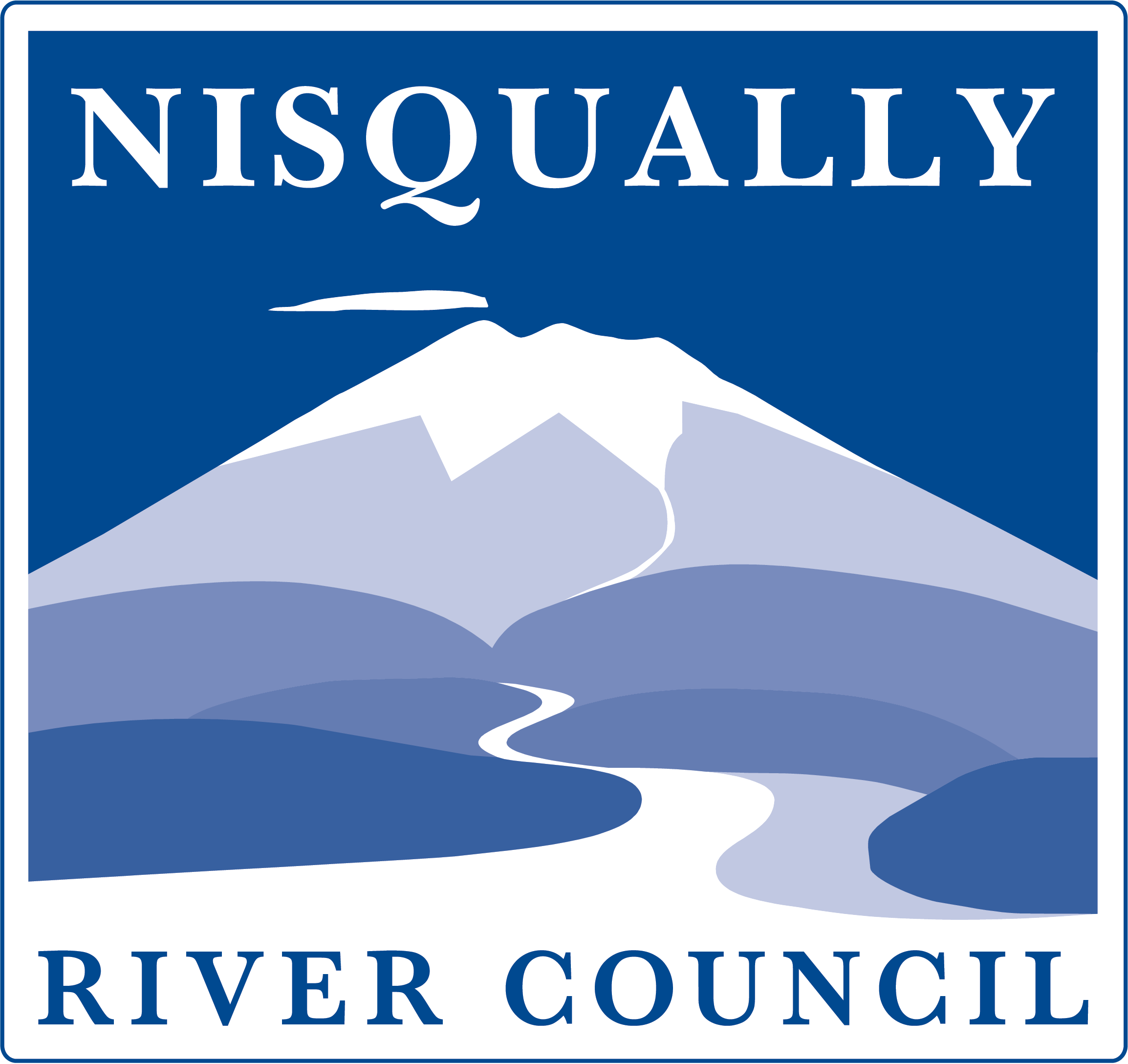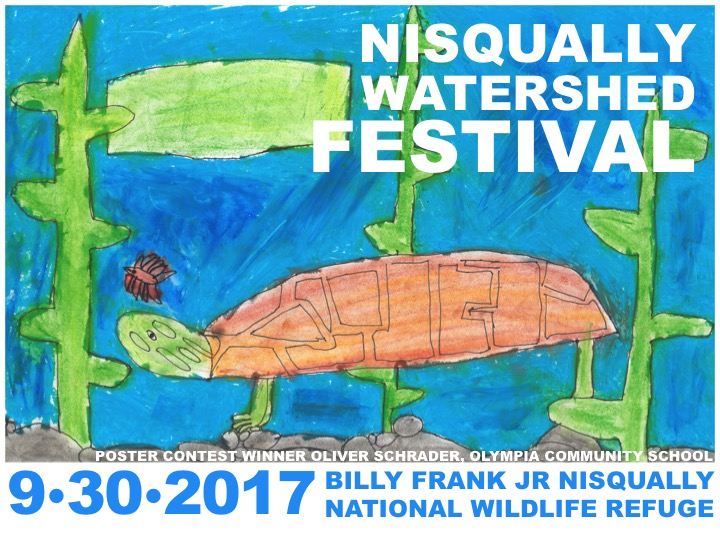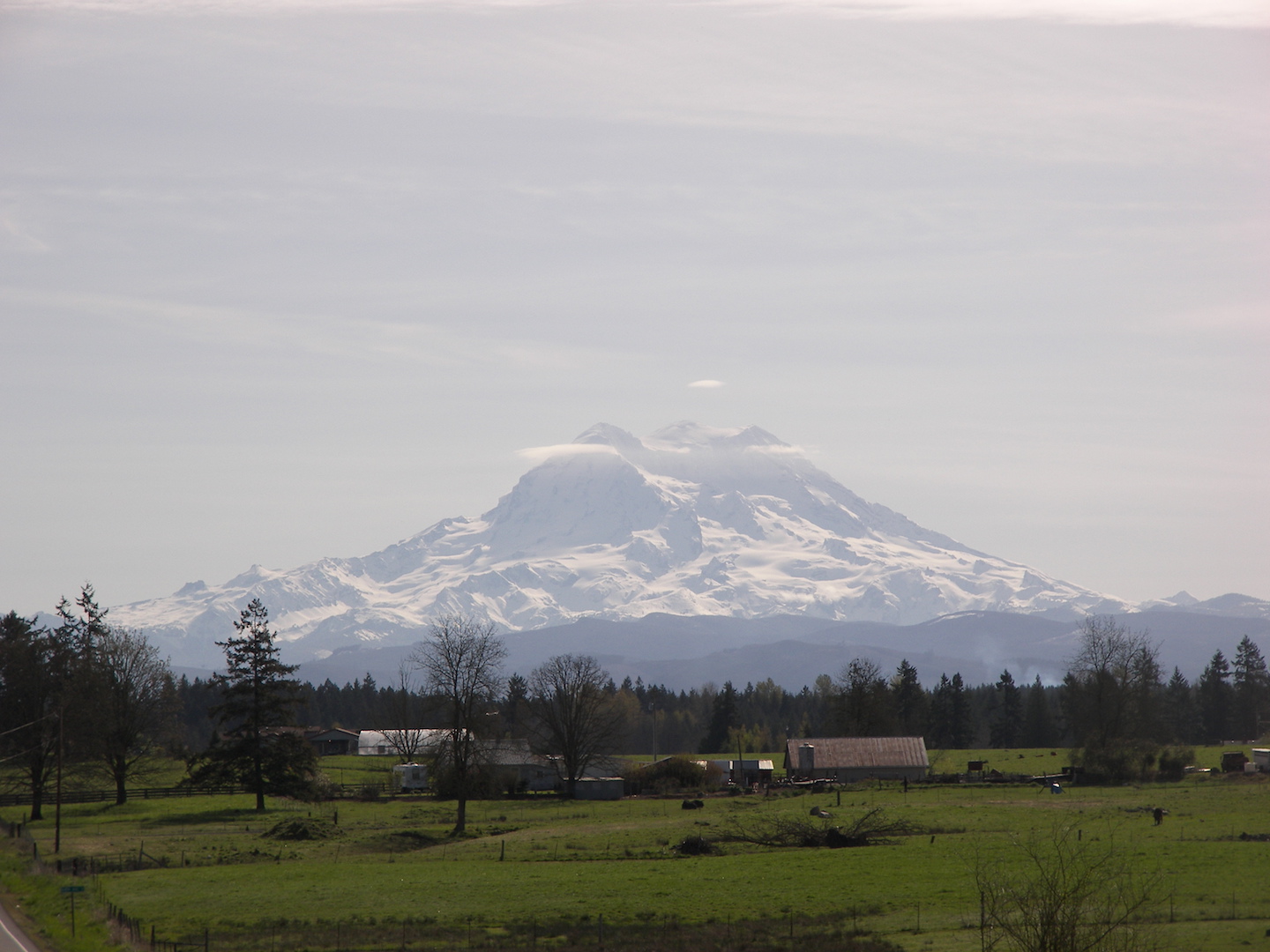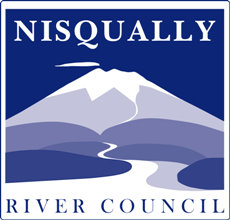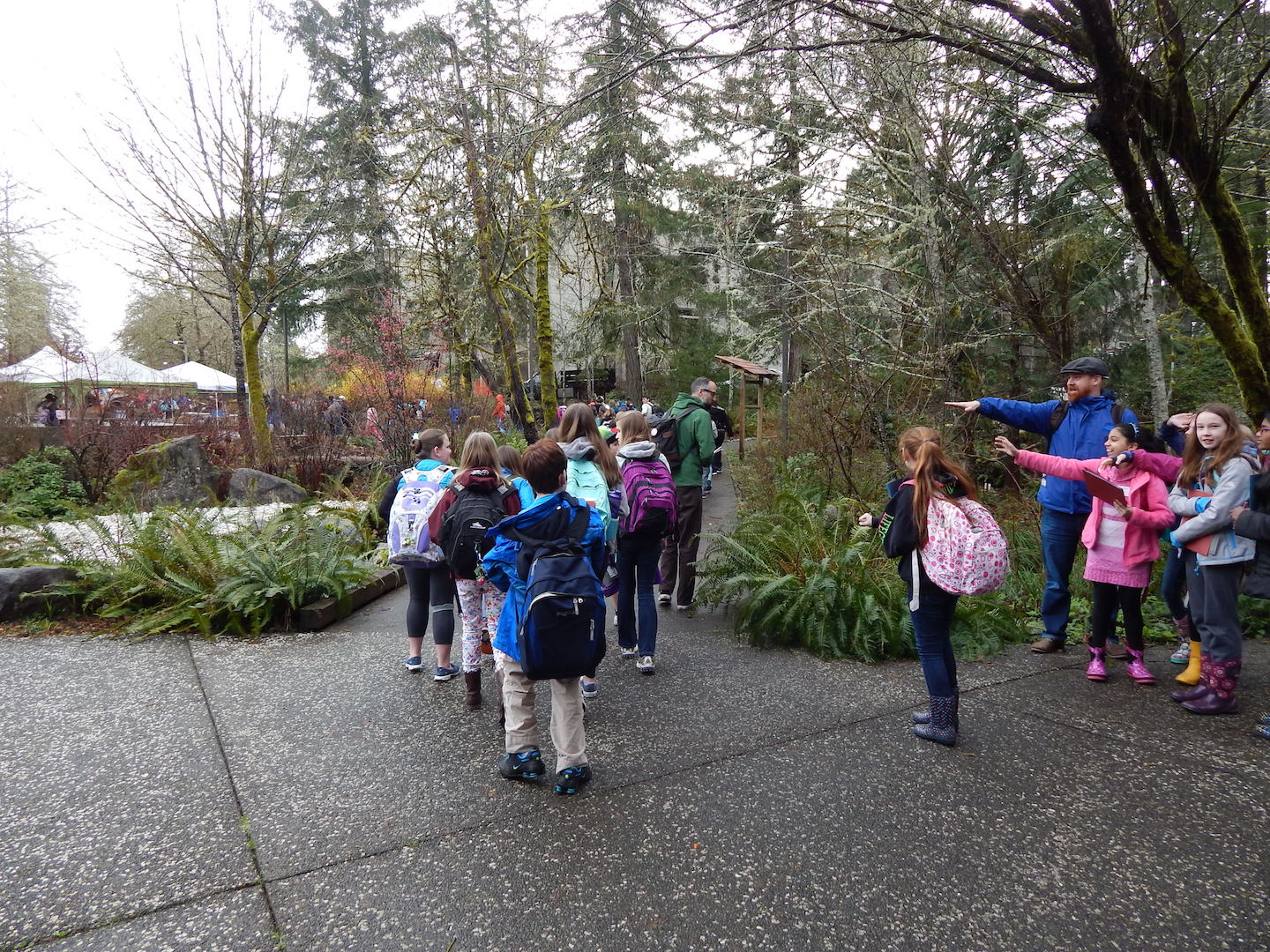Residents of and visitors to the Nisqually Watershed are fortunate to have countless recreation opportunities, stretching from summit to sea. Whether hiking at Mount Rainier National Park, horseback riding in Elbe Hills State Park, biking along the Yelm-Tenino trail, bird watching at the Nisqually National Wildlife Refuge, or kayaking on the Nisqually River Delta, there is an activity for everyone!
The new year is bringing even more outdoor recreation options to the watershed. The Nisqually State Park, located near Eatonville, will officially open this spring. Construction of a parking area was recently completed, and the Nisqually Indian Tribe is developing an interpretive kiosk. A ribbon cutting ceremony will be held later in the year.
The creation of the Nisqually State Park was called for in the Nisqually River Management Plan, as a way to protect cultural and natural resources in the area. In fact, the area within the Park boundaries has a rich history. The Nisqually Indian Tribe has used the area for thousands of years. The park also protects the confluences of the Mashel River and Ohop Creek–the two most important salmon bearing tributaries of the Nisqually River.
The start of 2016 also marks the continuation of the Nisqually River Water Trail planning process. This process, which began in 2015, aims to increase public access to the Nisqually River in a way that respects cultural sensitivity and environmental integrity. While the watershed contains ample recreation opportunities, public access points allowing rafters, kayakers and other non-motorized boats to the river is lacking. This process will result in a path forward to increase recreation opportunities and provide interpretive materials on safety concerns, the salmon lifecycle, the Nisqually Indian Tribe and more.
The Nisqually River Council is committed to expanding recreation opportunities within the watershed as a part of the Nisqually Watershed Stewardship Plan (NWSP). The NWSP, which replaced the Nisqually River Management Plan, contains 11 indicators that collectively will result in a sustainable watershed. We believe that true sustainability encompasses a healthy social, economy and environment.
The NWSP recreation indicator directs efforts to “protect and enhance the network of trails and recreational opportunities for all ages and abilities.” The opening on the Nisqually State Park and completion of the Nisqually River Water Trail Plan mark important milestones in further achieving that goal.
